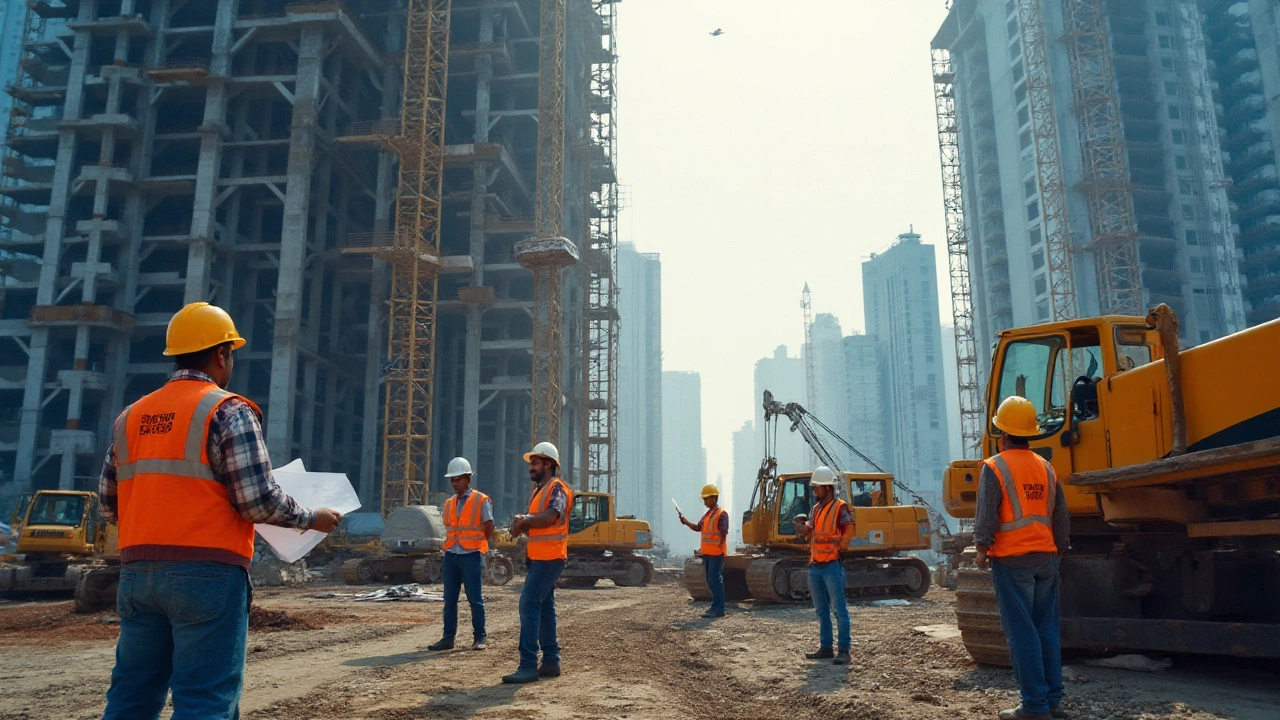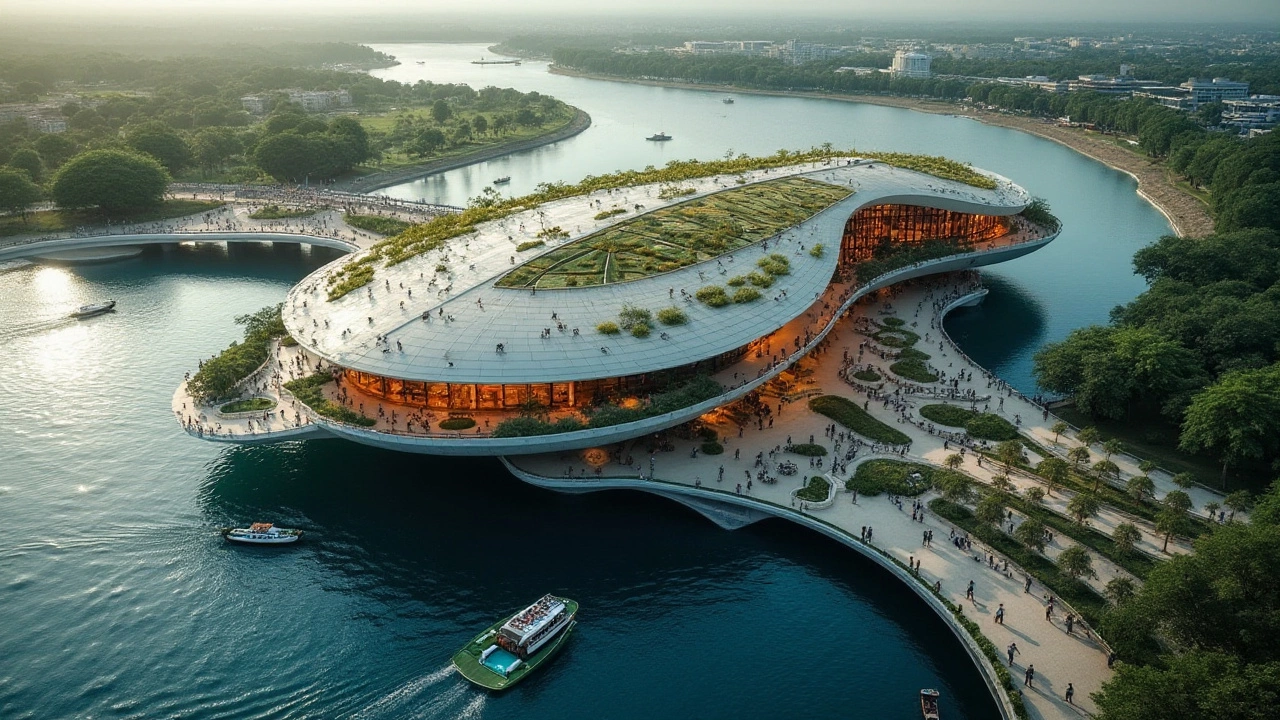Top Global Giants in the Construction Industry

In the vast and dynamic world of construction, a select few companies stand out for their size, expertise, and influence. These industry giants have transformed skylines, spearheaded monumental projects, and continuously push the boundaries of what's possible in construction.
These firms aren't just brick-and-mortar powerhouses; they represent innovative spirit, employing cutting-edge techniques and sustainable practices. Whether constructing towering skyscrapers or developing intricate transportation systems, they leave an indelible mark on the built environment.
Diving into the stories of these construction behemoths reveals fascinating insights into their strategies, key projects, and the secret sauce that keeps them at the top. As the industry evolves, understanding these leaders offers a window into future trends and opportunities.
- Global Leaders in Construction
- Key Projects and Achievements
- What Sets Them Apart
- Industry Trends and Insights
Global Leaders in Construction
The construction industry has always been the backbone of economic growth, creating infrastructure that supports communities and economies. Among the massive network of construction companies worldwide, a select few have truly distinguished themselves as leaders. These global titans like China State Construction Engineering, Vinci SA, and Bechtel have dominated the industry with remarkable projects and substantial revenues. Their projects span continents, leaving their fingerprints on cities and skylines around the world. One glance at these projects and it's clear they are experts in innovation and execution, often becoming benchmarks of excellence as other companies aspire to follow in their footsteps.
Among these companies, the largest construction companies dominate markets, employing thousands and affecting the lives of millions through their projects. China State Construction Engineering Corporation, for instance, is renowned for its monumental projects. From skyscrapers to expansive bridges, they lead in mega projects that put them miles ahead of competitors. Their prominence is reflected not just in size but in their commitment to cutting-edge technology and sustainability. Similarly, Vinci SA, based in France, stands out with projects that combine elegance with engineering prowess. This French multinational conglomerate continues to capture global markets with its expertise stretching across several domains, from energy to civil engineering. Bechtel, an American powerhouse, showcases remarkable flexibility, having been a key player in constructing entire cities in the Middle East and undertaking significant infrastructure projects elsewhere.
One of the secrets to these companies’ success lies in their workforce and strategic operations. They rely heavily on skilled labor and cutting-edge technology to surge ahead. Technology in construction is a pivotal force today, with automation and advanced software shaping the future of the industry. These firms' investments in research and development ensure they remain at the forefront, continually upping the ante in terms of project quality and efficiency. According to a
The Guardian, 'these construction leaders have set paradigms that smaller firms aspire toward, not merely in scale but in commitment to sustainable and technologically advanced construction.'This strategic blend of brawn and brain stems not just from resources but from visionary leadership guiding these companies' path to growth and excellence.
As the global outlook embraces sustainability, these giants have acknowledged the essential pivot towards more eco-friendly and sustainable building methods. Initiatives like zero waste, energy-efficient building technologies, and sustainable sourcing demonstrate the evolving face of the construction industry. Engaging in green construction projects and adapting to environmental regulations is more vital now than ever. For instance, Vinci is at the helm of eco-innovative projects that promise significant energy saving and carbon reduction, addressing the inevitable question of sustainability head-on. These shifts indicate a vital trend in the future of construction that other players are keenly watching and learning from. With such efforts, global leaders are not only shaping the present but also caring for the future of construction.

Key Projects and Achievements
When it comes to the giants of the construction industry, their accomplishments can be seen in every corner of the globe. These top construction firms have taken on the challenge of building structures that define cities and enhance infrastructure, creating marvels that often occupy center stage in urban landscapes. For instance, a prominent figure in this field is China’s China State Construction Engineering Corporation (CSCEC), renowned for its vast portfolio that includes the Shanghai Tower, which is the second tallest building in the world. Rising with elegance to 632 meters, this stunning skyscraper showcases not only architectural brilliance but also advanced sustainable solutions.
Meanwhile, across the ocean, the Spanish company ACS Group is known for its involvement in high-profile projects such as the Al Ula Development Project in Saudi Arabia. Spearheaded with a vision to meld traditional landscapes with modernity, this enterprise is a testament to the company's drive to push the limits of innovation in even the most challenging environments. These projects are more than just concrete and steel; they epitomize the dream and drive of global construction leaders who persistently strive to chart new territories. They reflect a tapestry spun by intricate planning, international collaboration, and a relentless pursuit of excellence.
Achieving such feats isn't merely about scale but also about the intricate challenges each project entails. A case in point is the Bamna's Bridge Program, a project managed by the American construction giant Bechtel. It's an extensive endeavor to overhaul over 50 bridges in a year, improving connectivity in remote areas. The project underscored Bechtel's competence in not only executing massive projects efficiently but also utilizing a workforce-driven approach that ensures the highest standards of safety and sustainability. The detailed synchronization of intricate logistical frameworks is a hallmark of their success, laying down a roadmap for future infrastructural solutions worldwide.
Beyond these monumental structures lies the recognition and accolades that cement these companies' reputations. From prestigious awards celebrating exceptional engineering and resilience against natural adversities to certifications in quality and environmental management, these firms gather laurels that distinguish them from myriad competitors. In the realm of construction, awards aren't just shiny souvenirs; they symbolize adherence to superior standards and the continued enthusiasm to enhance the horizons of what's achievable. As architect Frank Gehry puts it,
“The best advice that I could give to anyone is to spend your time working on whatever you are passionate about in life.”Passion such as his propels these companies to etch their legacies in the annals of construction history.
A glimpse into their achievements also means a peek into numerical marvels—the unexpectedly intriguing world of statistics that bolster their epic tales.
| Company | Number of Projects Completed | Annual Revenue (Billions $) |
|---|---|---|
| CSCEC | 10,983 | 204.5 |
| ACS Group | 1,735 | 39.1 |
| Bechtel | 25,000 | 29.4 |

What Sets Them Apart
In the fiercely competitive world of the construction industry, standing out from the crowd is no small feat. But these top-tier companies have found unique ways to distinguish themselves and become global leaders. One of the primary factors is their unwavering commitment to innovation. These companies are not afraid to invest heavily in research and development. They experiment with cutting-edge technologies, such as Building Information Modeling (BIM) and 3D printing, which enable them to improve efficiency and reduce costs. Such technological advancements allow them to streamline processes and offer faster project completion times, all while ensuring top-notch quality.
Environmental responsibility and sustainable practices form another cornerstone that elevates these top construction firms. Many undertake ambitious sustainability initiatives, minimizing their carbon footprint through resource-efficient methods. Green building certifications, like LEED, have become standard benchmarks for these corporations, reflecting their commitment to the planet. Additionally, these firms often lead in the adoption of renewable energy projects, from solar to wind farms, setting impressive standards in the industry.
What truly sets these companies apart is their ability to attract and retain top talent globally. They adopt a proactive approach in nurturing a dynamic and diverse workforce, often collaborating with universities and educational institutions to ensure a steady flow of skilled professionals. Through targeted training programs and a robust corporate culture, they build a foundation of expertise and innovation. The result is a team adept at tackling the biggest, most complex projects worldwide.
Moreover, their extensive portfolios boast impressive projects that have become landmarks in their own right. From skyscrapers piercing city skylines to sprawling infrastructure initiatives that connect continents, these signature projects serve as their calling cards. A commitment to quality, safety, and craftsmanship underlines every endeavor, ensuring they maintain their status as industry titans.
An industry expert once noted, "What separates the greats in construction is not just their ability to build but their vision for a sustainable and innovative future."Such visionary thinking keeps these giants at the forefront, allowing them to set trends that others follow.
Lastly, their strategic global presence enables them to tap into diverse markets, adapting their methods to local conditions and needs. This flexibility in operation not only ensures unwavering respect and trust from clients across the globe but also cushions the company from economic downturns in any single region. In essence, their agility combined with a strong foundational core ensures sustained growth and an ever-evolving future, no matter where the challenges may lie.

Industry Trends and Insights
The construction industry is witnessing a transformative journey propelled by technology and evolving consumer expectations. Today, one of the most prominent trends is the integration of digital technology across the construction process. Building Information Modeling (BIM) has revolutionized planning and execution, allowing for more accurate predictions and efficient resource management. Companies harnessing this tool are reducing costs and timelines significantly, setting a new norm in the industry.
Another critical trend shaping the industry is the shift towards sustainable construction. With increasing awareness about climate change and environmental degradation, construction companies are now prioritizing green building practices. These practices not only reduce the carbon footprint but also appeal to a market that favors eco-friendly options. Materials like recycled steel and sustainable wood are becoming mainstream, while solar integration in buildings is no longer just an add-on but a core feature.
In addition, there's a growing emphasis on modular construction. Particularly in urban areas with skyrocketing demand for housing, modular construction offers the advantage of speed and efficiency. By prefabricating building sections off-site and assembling them quickly on-site, construction companies can drastically reduce build times and costs. This trend is gaining more traction, especially in the development of affordable housing projects worldwide.
The industry is also seeing a rising involvement of technology in terms of drones, AI, and even robotics. These technologies help enhance safety, ensure quality controls are consistently met, and streamline construction processes through data-driven decisions. AI algorithms, for instance, can predict potential project risks and help in mitigating them early on. Robotics are beginning to handle repetitive tasks, which decreases safety risks while increasing precision and efficiency on-site.
Construction firms are also heavily investing in workforce training, adapting to this rapidly changing environment. Skilled labor is becoming more defined by technological prowess and adaptability than traditional craftsmanship alone. Continuous professional development is becoming standard practice, ensuring that teams are not just caught up with the latest tech but are adept at leveraging it to solve real-world challenges.
"The future of the construction industry is inextricably linked to its ability to adapt and innovate," says John Doe, CEO of a leading construction analytics firm. "Without embracing new technologies and sustainable practices, firms will struggle to meet both regulations and consumer expectations."
Finally, globalization continues to play a significant role. Construction firms are expanding their reach beyond native borders, capitalizing on emerging economies that demand robust infrastructure. Through joint ventures and partnerships, these global construction leaders are setting the stage for a collaborative international effort to address worldwide infrastructure needs. The coming years promise a landscape of rapid evolution, challenge, and immense opportunity for those willing to innovate and adapt.
Write a comment